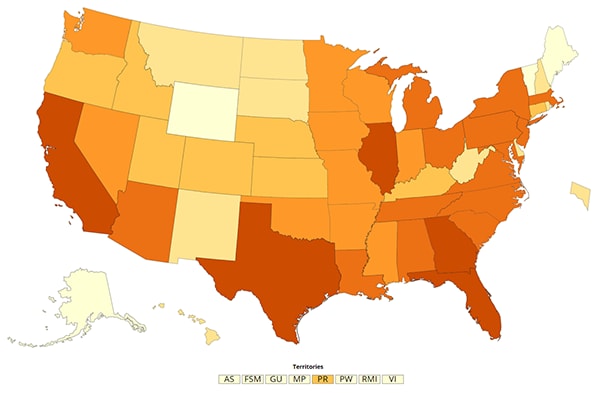Received this email from a friend? Sign up now |
|---|
October 20, 2020 This message includes updates on the COVID-19 response from CDC. The COVID-19 Outbreak is a rapidly evolving situation and information will be updated as it becomes available. |
|---|
8 Things to Know about Vaccine PlanningThere is currently no authorized or approved vaccine to prevent coronavirus disease 2019 (COVID-19) in the United States; however, the U.S. government’s Operation Warp Speed program has been working since the pandemic started to make a COVID-19 vaccine available as soon as possible. There may be a limited supply of COVID-19 vaccines before the end of 2020. If there is limited supply, some groups may be recommended to get a COVID-19 vaccine first. Find out the 8 things you need to know about vaccine planning. |
|---|
Considerations for Wearing MasksCDC recommends that you wear masks in public settings around people who don’t live in your household and when you can’t stay 6 feet away from others. Masks help stop the spread of COVID-19 to others. This recommendation is based on what we know about the role respiratory droplets play in the spread of the virus that causes COVID-19, paired with emerging evidence from clinical and laboratory studies showing masks reduce the spray of droplets when worn over the nose and mouth. COVID-19 spreads mainly among people who are within about 6 feet of one another, so the use of masks is particularly important in settings where social distancing is hard to maintain. |
|---|
Travel during the COVID-19 PandemicTravel increases your chances of getting and spreading COVID-19. Your chances of getting COVID-19 while traveling also depend on whether you and those around you take steps to protect yourself and others, such as wearing masks and staying 6 feet away from people outside your household. Airports, bus stations, train stations, and rest stops are all places travelers can be exposed to the virus in the air and on surfaces. These are also places where it can be hard to keep your distance from others. In general, the longer you are around a person with COVID-19, the more likely you are to get infected. |
|---|
Test for Current InfectionNot everyone needs to be tested for COVID-19. People who have symptoms of COVID-19, people who have been within 6 feet of someone with confirmed COVID-19 for a total of at least 15 minutes, and people who have been asked or referred by a healthcare provider may need to be tested for COVID-19. If you do get tested, you should stay home until you get your test results and follow the advice of your health care provider or a public health professional. If you test negative for COVID-19, it means you did not have COVID-19 at the time of testing, or that your sample was collected too early in your infection. If you have symptoms later, you may need another test to determine if you are infected with the virus that causes COVID-19. Remember, you can be exposed to COVID-19 after the test and then get infected and spread the virus to others. |
|---|
How to Protect Yourself and Others in the WorkplaceIf you have or think you have symptoms, or have tested positive for COVID-19, stay home and find out what to do if you are sick and when you can be around others. If you are well, but you have a sick family member or recently had close contact with someone with COVID-19, notify your supervisor and follow CDC-recommended precautions. Other steps to protect yourself and others include monitoring your health and being alert for symptoms, and wearing a mask in public settings. |
|---|
Coronavirus Disease 2019 (COVID-19) in the U.S. |
|---|
As of October 20, 2020 In the United States, there have been 8,188,585 confirmed cases of COVID-19 detected through U.S. public health surveillance systems in 50 states and the District of Columbia, Puerto Rico, Guam, the Northern Marianas Islands, and U.S. Virgin Islands. CDC provides updated U.S. case information online daily. |
|---|
|
|---|

